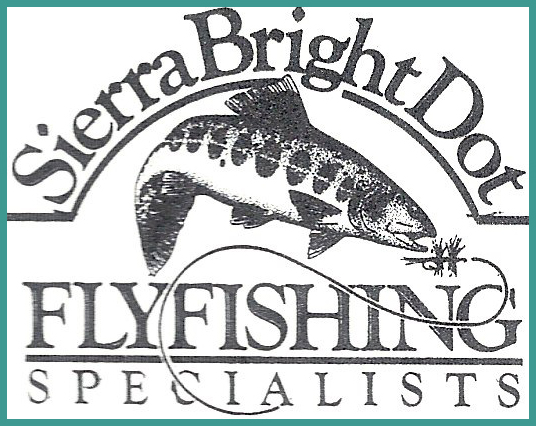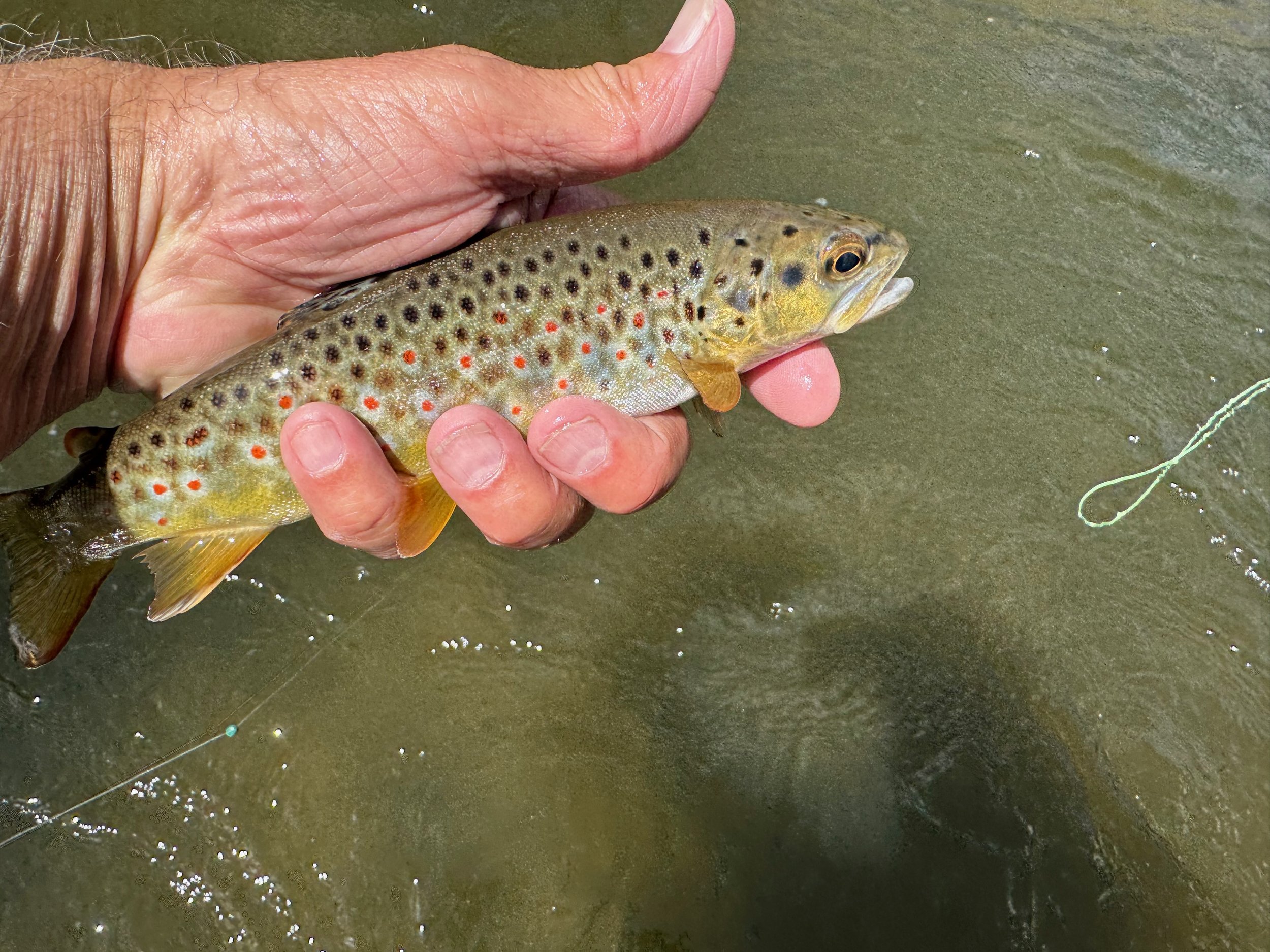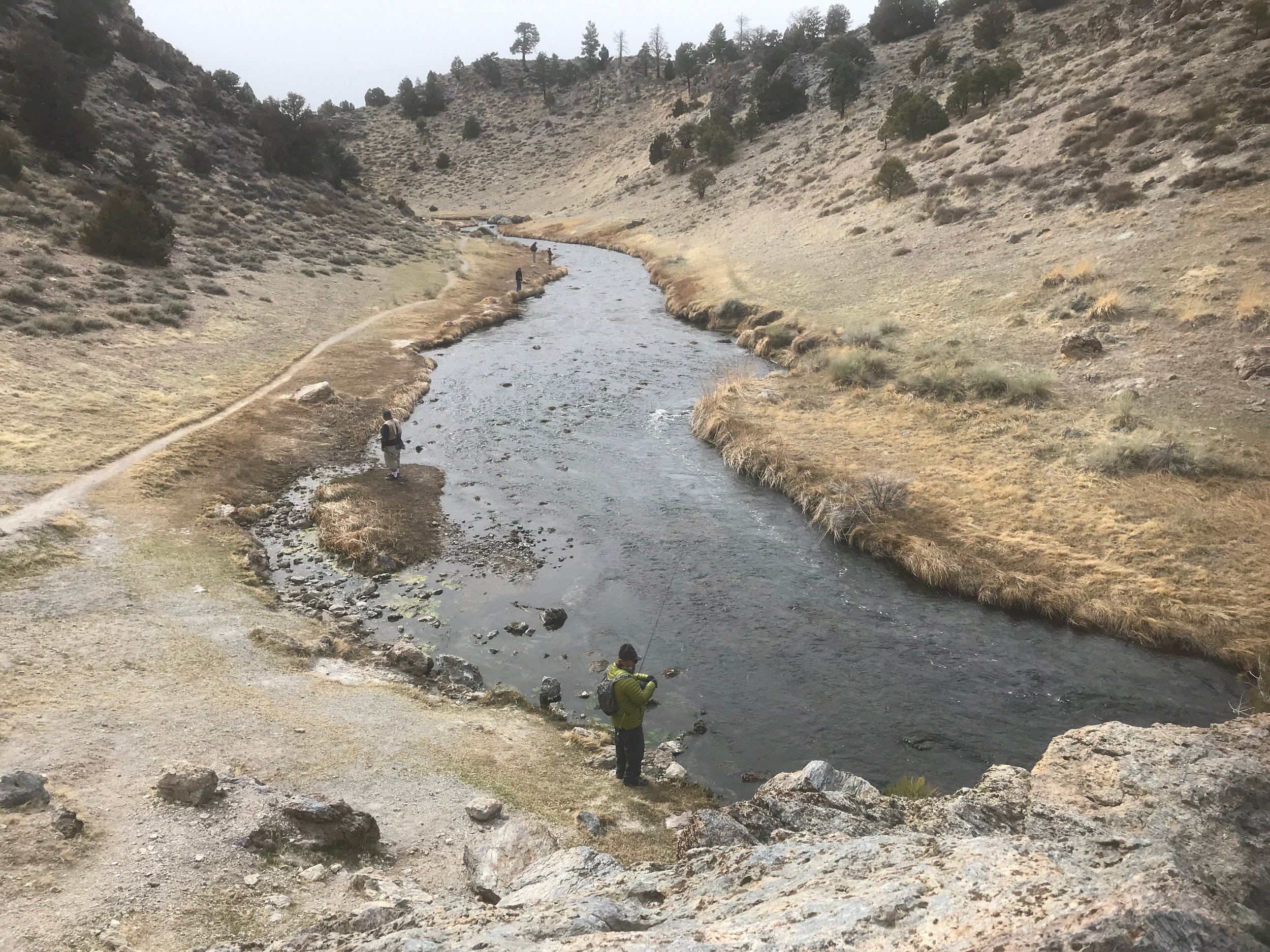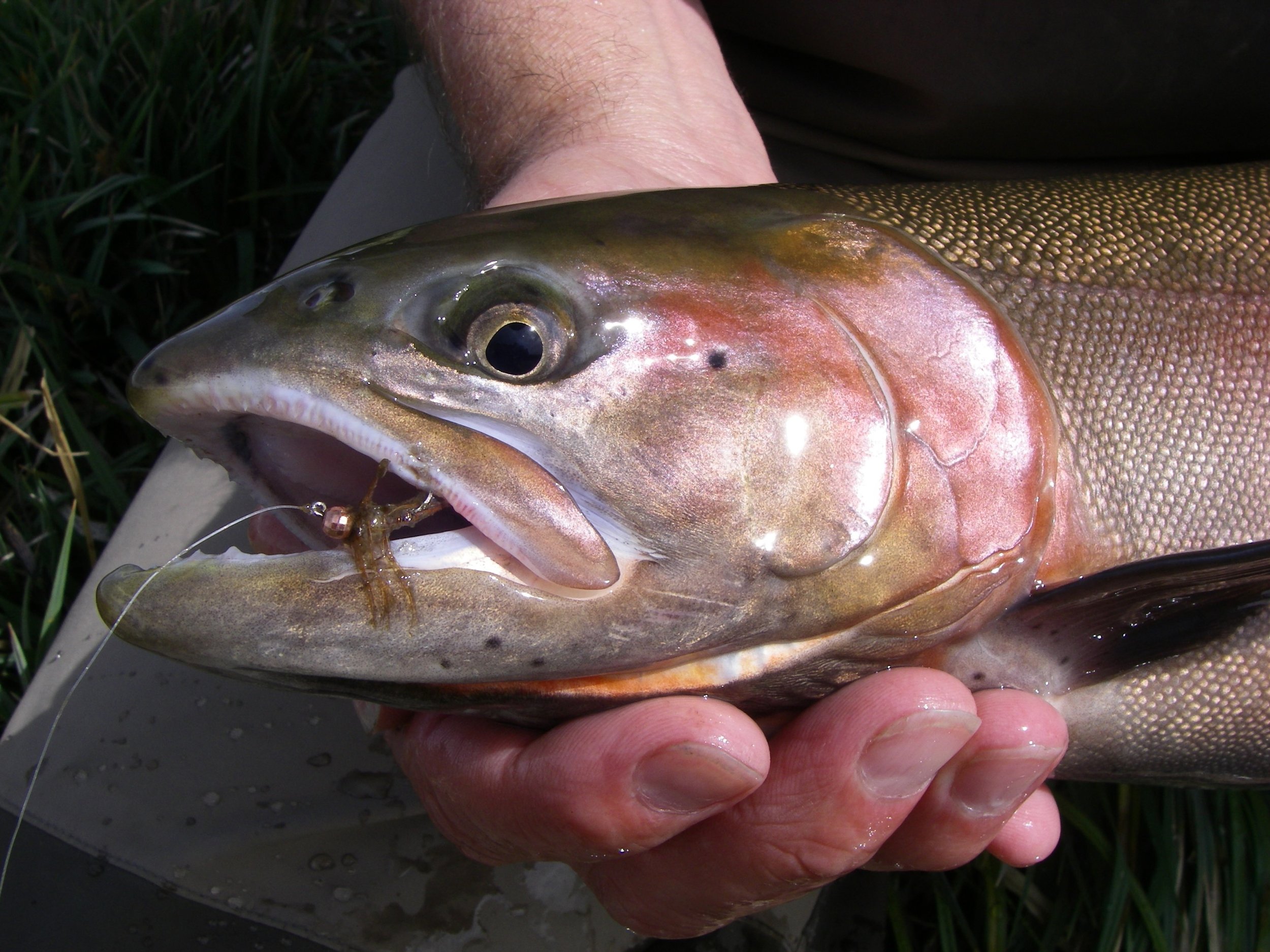So far we’re having a typical Eastern Sierra Spring. Lots of wind and cold days with some warm days in between. Right now were getting several warm windless or slightly breezy days on the water. With the warm weather the water is warming up and the trout are starting to feed actively on caddis, mayflies and midges. Nymphing continues to be the best producer of trout, but the right water on the right day your will find surface feeding trout.
Wild trout are the quarry fly fishers are chasing in the Eastern Sierra.
Lower Owens River
Wild Trout Section:
Water flows in the lower Owens River are maintaining at 175 CFS. Expect these flows for at least another week, but it is no guarantee so I would be checking the DWP flow rates daily. You can find these on my webpage. Mid-day blue wing olive mayflies are hatching. There is some surface activity, but the bulk of the action is coming on nymphs. Late afternoon there is a caddis hatch on the water that the trout are feeding on. The trout are keying in on the caddis pupae as they swim through the water column heading to the surface to hatch. With the increase in water flows increase the size of beads on your Euro nymphs or increase the split shot size on your indicator rig. For nymphs fish with bead head flash back pheasant tail nymphs, olive quilldigons, hot spot pheasant tail nymphs, dark brown La Fontaine’s caddis pupae, dark brown caddis pupae and Duracell nymphs. For dry flies use Adams parachutes, blue wing olive parachutes, olive sparkle duns, dark brown elk hair caddis, dark brown X-caddis and dark brown CDC caddis.
Nymphing under an indicator or with a Euro rig is producing wild brown trout to 16 inches in the wild trout section of the lower Owens River as long as the flows do not increase above 300 CFS.
Hot Creek
Interpretive Site:
Blue wing olive mayflies continue to hatch and the trout are feeding on the hatching adults. For the dry flies use Adams parachutes, blue wing olive parachutes and olive sparkle duns in size 20. For the nymphs use bead head flash back pheasant tail nymphs, olive quilldigons and olive quill RS2 nymphs. Other nymphs that produce on Hot Creek are olive scuds, tiger midges, zebra midges and olive burlap caddis. The most productive time to be on the creek is from 10:00 to 2:00 when the insects are most active.
Once opening weekend happens Hot Creek will become crowded with fly fishers pursuing wild trout .
Canyon Section:
The canyon offers slightly easier to catch wild brown and rainbow trout. The canyon has a stepper gradient which makes the fish more likely to react to your fly pattern then stare at it and refuse it. There are some great dry fly runs in the canyon, but it is a great place to nymph. Bead head flash back pheasant tail nymphs, olive quilldigons, hot spot pheasant tail nymphs, olive burlap caddis, olive scuds, tiger midges and zebra midges are producing trout for fly fishers fishing with a Euro rig or under an indicator. Key to success is covering all the water with your nymphs as the trout are located all through the creek. If the creek is not crowded I like to slowly cover all the water moving three steps at a time.
The stone fly nymph is a cutthroat trophy trout producing fly pattern in the upper Owens River.
Upper Owens River
Above Benton Crossing Bridge:
Juvenile rainbow trout and brown trout are the fish to catch right now. These fish are taking nymphs and dries. Bead head flash back pheasant tail nymphs, bead head flash back gold ribbed hare’s ears, olive quilldigons and hot spot pheasant tail nymph are the nymphs that are producing. Adams parachutes, elk hair caddis and blue wing olive parachutes are fooling the juvenile trout on the surface. There are a few trophy trout in the river that are taking large nymphs like the stoner nymph and the green/gold Prince nymph.
Mallards did not mine that Bishop Creek Canal was flowing off color and the trout were not feeding.
Bishop Creek Canal
Behind Bishop Veterinary Hospital:
There was a day last week when the canal blew out with dirty water coming from both forks of Bishop Creek. The flows are up and clearing allowing fly fishers to nymph with indicators or Euro nymph rigs. The trout are feeding on mayfly nymphs, tan scuds and midges. There has been few to no surface feeding trout. Fish with tan scuds, olive quilldigons, bead head flash back pheasant tail nymphs, hot spot pheasant tail nymphs, tiger midges and zebra midges. Be sure you use a split shot heavy enough to keep your nymphs bouncing along the substrate where the trout are looking for nymphs.





